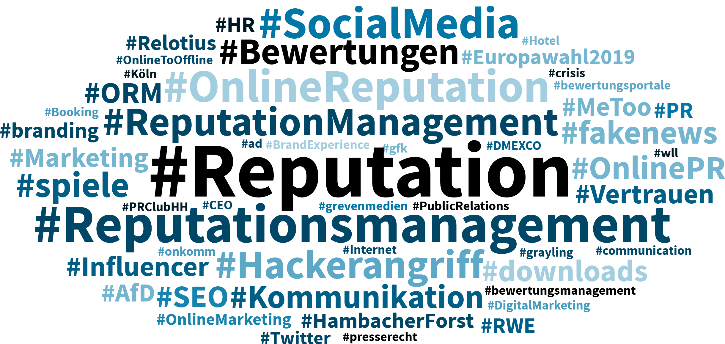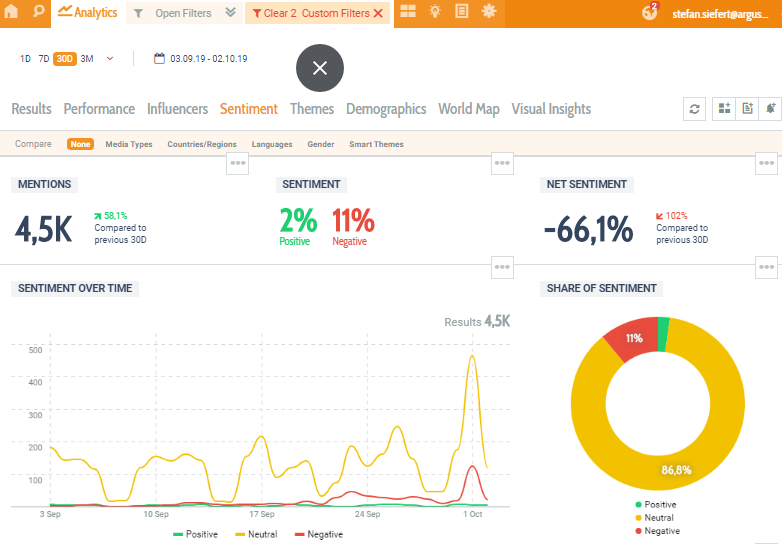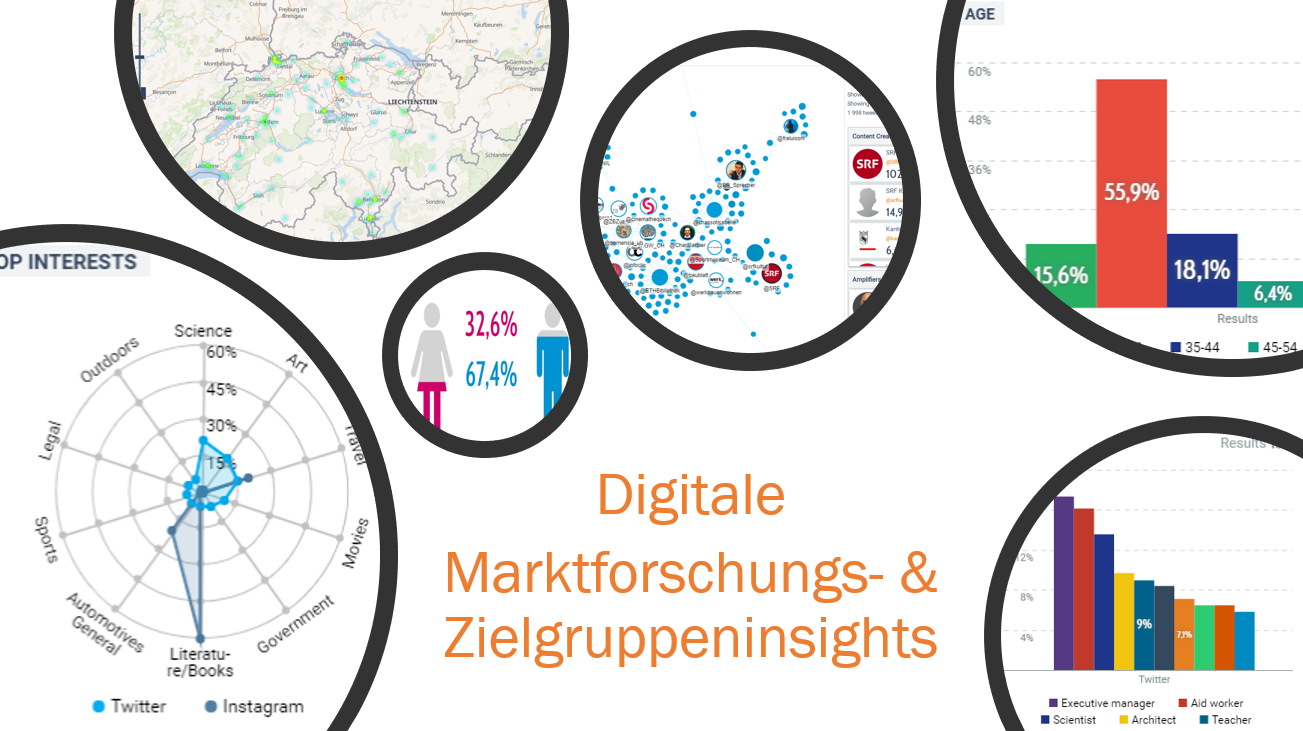
Blog
Back5 tips for successful reputation management on social media
“Once your reputation is ruined, you can do as you please.” – But if you are not aiming for a rockstar lifestyle, this is perhaps not the best recommendation if you want your business and projects to be successful. Outside the rock ‘n’ roll industry, strategic, cross-channel reputation management helps you build up and maintain a positive image. Below are the five most important tips you should follow here.
Do you know how to build up your company’s reputation across all channels and arm yourself against reputation crises and media disasters? Which channels should you use and how can you keep an eye on all touch-point activities? How do you enter into dialogue with customers and stakeholders and get to know them better? Why should the subject be of strategic importance to the business management too?
Most common reputation hashtags in Switzerland. Source: Talkwalker November 2019
Before I answer the questions, I would like to give an example how social media reputation management can lead to success even in difficult cases.
From a media disaster to a high-flying campaign
Customers of public transport company Berliner Verkehrsbetriebe (BVG) were asked to share their best public transport experience on social media using the hashtag #WeilWirDichLiebe (#BecauseWeLoveYou). But given increasing delays, grumpy bus drivers and a reputation of being dirty, the campaign primarily drew negative comments and unleashed a media disaster.
The campaign manager then started an authentic and self-deprecating communication strategy. The campaign focused on how BVG identified with its city, and they used the infamous Berlin vernacular to make the point, as the following examples show:
 |
 |
 |
Source: Facebook profile of Berliner Verkehrsbetriebe
Humorous social media posts and the use of user-generated content helped improve BVG’s brand image. The campaign, which has since won awards, increased acceptance among the younger generation and created a positive image. Further successful marketing measures could then be launched as a result, such as the sale of exclusive sneakers as season tickets
What does the example of BVG’s #WeilWirDichLieben campaign show us about reputation management on social media? This needs a quick explanation of what reputation is and what dimensions are relevant for your communication.
What is reputation?
Reputation describes an image of a person, a company or an organisation with respect to its capabilities, trustworthiness and likeability as perceived in public by third parties (e.g. the media).
1. Manage your reputation at all levels
Unlike image, which is a spontaneous, individual and non-specific impression, the term reputation is defined as a longer-term, specific attribute which can be analysed and measured in various dimensions.
Normally, a distinction is made between three dimensions which are relevant to reputation:
- “Functional reputation” relates to the capability and performance of a person or company based on objective, rational criteria.
- “Social reputation” is a measure of the trustworthiness of a brand based on ethical and social standards.
- “Expressive reputation” is based on likeability and emotional factors such as brand uniqueness and charisma.
In principle, a good reputation is based on solid reputation scores across all three dimensions. The dominance of one dimension can influence the public perception of a brand and the other dimensions of its reputation.
This is particularly clear in the example of BVG’s social media campaign: from a “functional” perspective, BVG does not have a good reputation because of delays and poor service. But, using transparency and self-deprecation, the social media campaign succeeded in restoring the “social acceptance” of the transport company as an integral cultural part of the city. Even absurd posts are shared on social media and accepted as defining the identity of Berlin. This considerably reinforced the “expressive dimension”, as demonstrated by the improved brand perception and the hype surrounding the BVG sneakers.
But how can these three dimensions be brought together in specific terms with your company and communication strategy? The illustration below gives a typical impression of how subjects can be linked together. The reputation radar diagram can also be applied to other products and relevant topics.
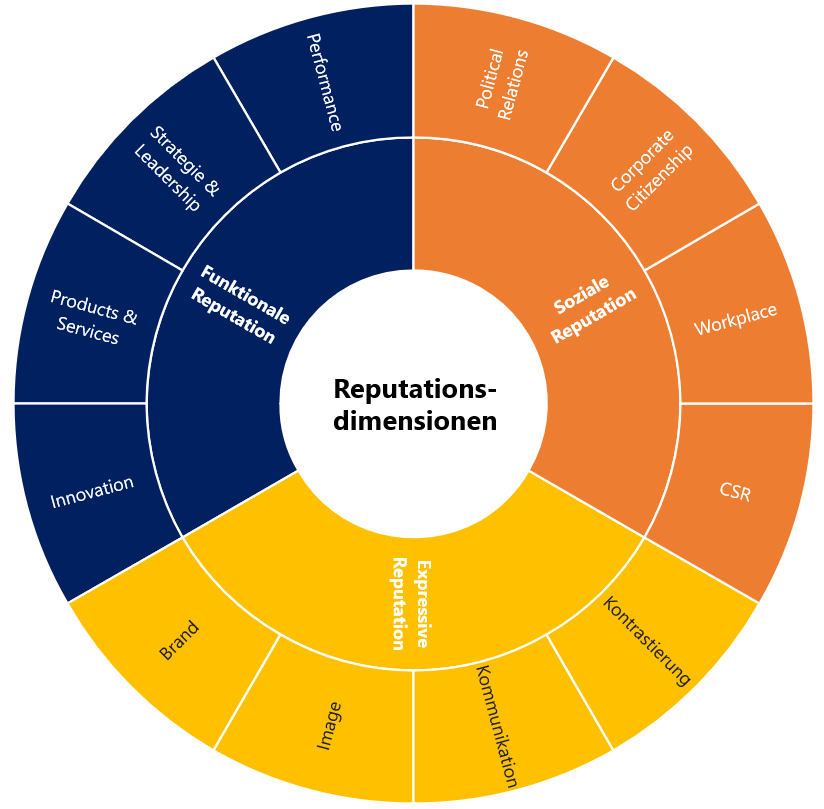
The reputation radar explains the combination of reputation and strategy dimensions (Graphic: ARGUS DATA INSIGHTS).
Whether you want to prevent any negative media impact, a media disaster or a critical customer review, or you want to realign your own communication strategy across digital channels, the most important thing is undoubtedly:
“Do no leave your digital reputation to chance, but instead actively manage it across all three dimensions!”
2. Select the right social media channels
There are various reasons to use social media for reputation enhancement. On the one hand, social media is a kind of early warning system used to identify negative comments and media disasters at an early stage, allowing you to respond quickly and appropriately. It can also be used for marketing measures as well as corporate communication. The easiest way to manage your reputation is via your own channels, over which your company has full control.
But not all channels are relevant and sensible to the same degree for all customers. Whether you are already working with established platforms such as Facebook, Instagram and YouTube or prefer to focus on new channels like SnapChat or TikTok depends largely on your strategy, your positioning and the resources you have available. It is also worth noting that every social media channel offers its own content formats, specific target groups, different reaches and other marketing opportunities and the functions are very much dependent on the media format. They range from messenger services like WhatsApp, social network platforms like Facebook, professional networks such as LinkedIn and Zing, blogs and microblogging sites like Medium and Twitter, video and gaming platforms such as YouTube, Vimeo and Twitch to reviews on Amazon and Google MyBusiness. The following links give you an overview of the social media channels and their formats: Q4 Global Digital Statshot 2019 and Online-Marketing-Praxis.
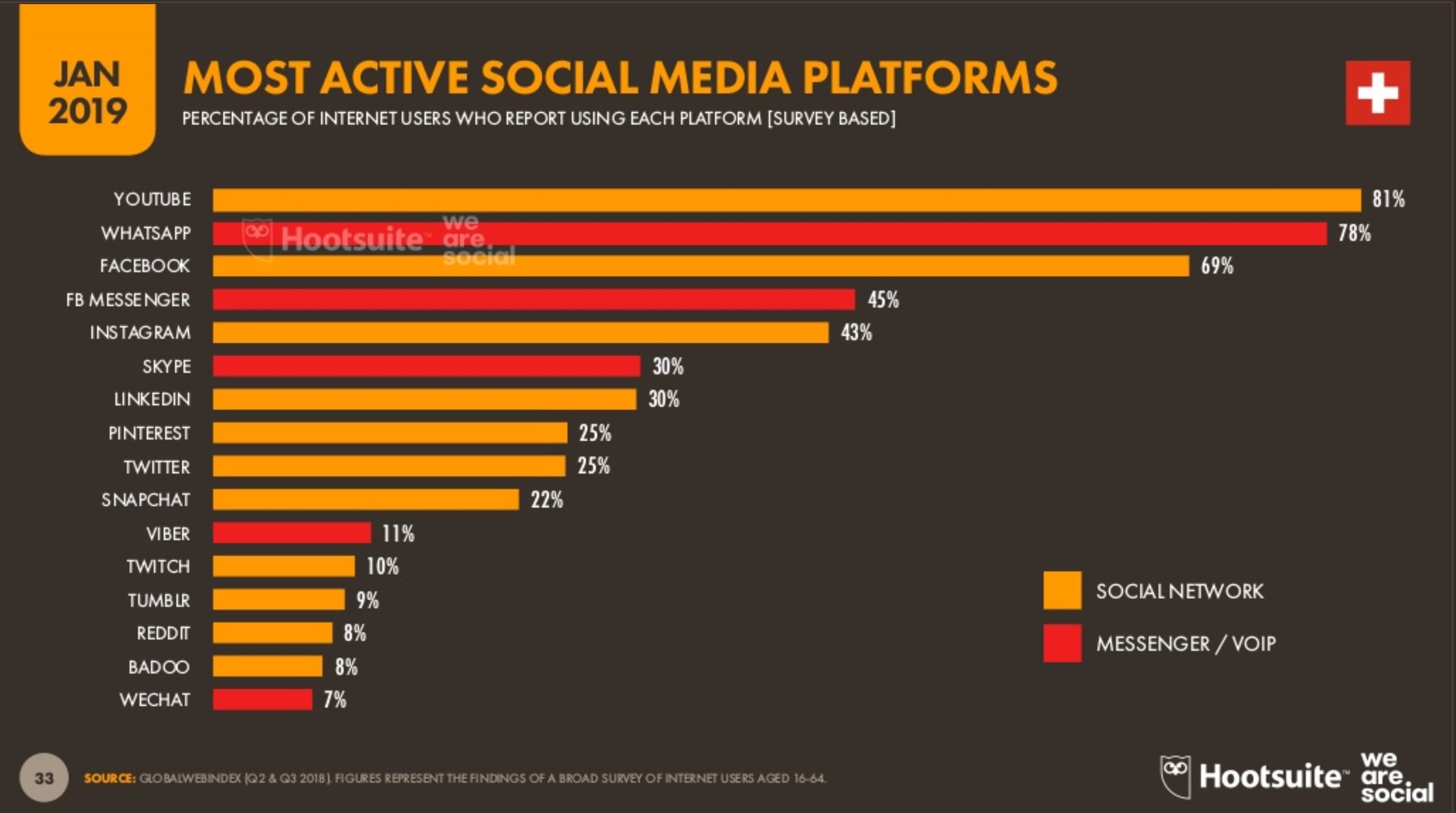
Source: Hootsuite
A tip from us: Start by focussing on just a handful of social media platforms and manage them effectively. Successful reputation management not only involves keeping an eye on your own social media channels (owned channels), but also on interaction with your content on external social media channels (earned media). It is also recommended that you keep a close eye on the reputation of the competition and the industry. In the next section, I will show you how easy this is with social listening tools.
3. Keep an overview with social listening tools: From “No Budget” to “High-End”
Effective social media communication and online reputation management are not possible without monitoring tools! Keeping an eye on all communication channels is not a question of money. You can monitor your own channels and relevant topics via platform dashboards; for everything else, you can use free tools such as Google Alerts. Talkwalker Alerts have proven effective for social media mentions.
Unfortunately, independent monitoring is time-consuming and only worthwhile for private individuals or small companies. The next step towards making reputation management more professional is to use social listening or social monitoring tools such as Talkwalker, Brandwatch and Ubermetrics. Alongside online news, these tools also collate all social media mentions and metrics in a customisable real-time dashboard. Dashboards can be made available to all relevant employees in the departments. An automatic sentiment analysis system is used to record the tone of the media content, and critical and negative mentions can quickly be highlighted. Segmentation and display based on dimensions of reputation and strategic topics, and immediate notification on crises and negative comments by means of alerts are possible with specialist knowledge and essential for social media management.
Source: Talkwalker
4. Use market research for relevant findings on your target group
As well as measuring the success of your own channels (owned channels) based on defined metrics (Key Performance Indicators), you can also determine market research insights on customer wishes, pain points and target group interests. You can explore industry topics and trends to help produce relevant content for PR and marketing, and provide a basis for building on your own corporate strategy. Competition and benchmark analyses can also be produced quickly and easily using social monitoring tools. These give you a comparison of performance, the relevant topics and stakeholders, and new competitor products. In an ideal scenario, you can link this data to internal or external data.
In summary: online and social media analyses and monitoring tools open up additional ways of gaining market research insights quickly and affordably, while also carrying out target group, competition and industry analyses in order to optimise your own reputation and communication strategy.
Source: Talkwalker
5. Budget for sufficient resources
Reputation management takes time and money, there is no question about that. Monitoring tools, looking after accounts and channels, interacting with users and communities, and production and distribution of appropriate content through the right channels requires financial and human resources. Added to this are the media budgets for social ads to increase reach and get to the optimum target groups.
Ask yourself the following question: Can my company afford to leave online reputation to chance, to miss out on a visible presence on social media, to miss trends and insight and thus leave the digital arena to the competition?
Conclusion
Online and social media reputation management is an essential part of strategic business management and communication. The key objectives need to be defined in order to manage and optimise reputation across all dimensions in harmony with the company’s own strategic direction. Successful reputation management requires tools and resources which are ideally implemented from management level through the entire culture of the organisation but should at least be incorporated into the communication and marketing department and made available to the relevant offline and online touch points.
PS: From a functional perspective, a good reputation relies on developing good products and services. From a social perspective, it is about being trustworthy and reliable and, from an expressive perspective, getting customers excited and ensuring positive differentiation from the competition. The old PR adage still applies in the digital age of social media: “Do good things and talk about them!”
As the CEO, it is worth doing more and getting your employees involved in online communication, too.
